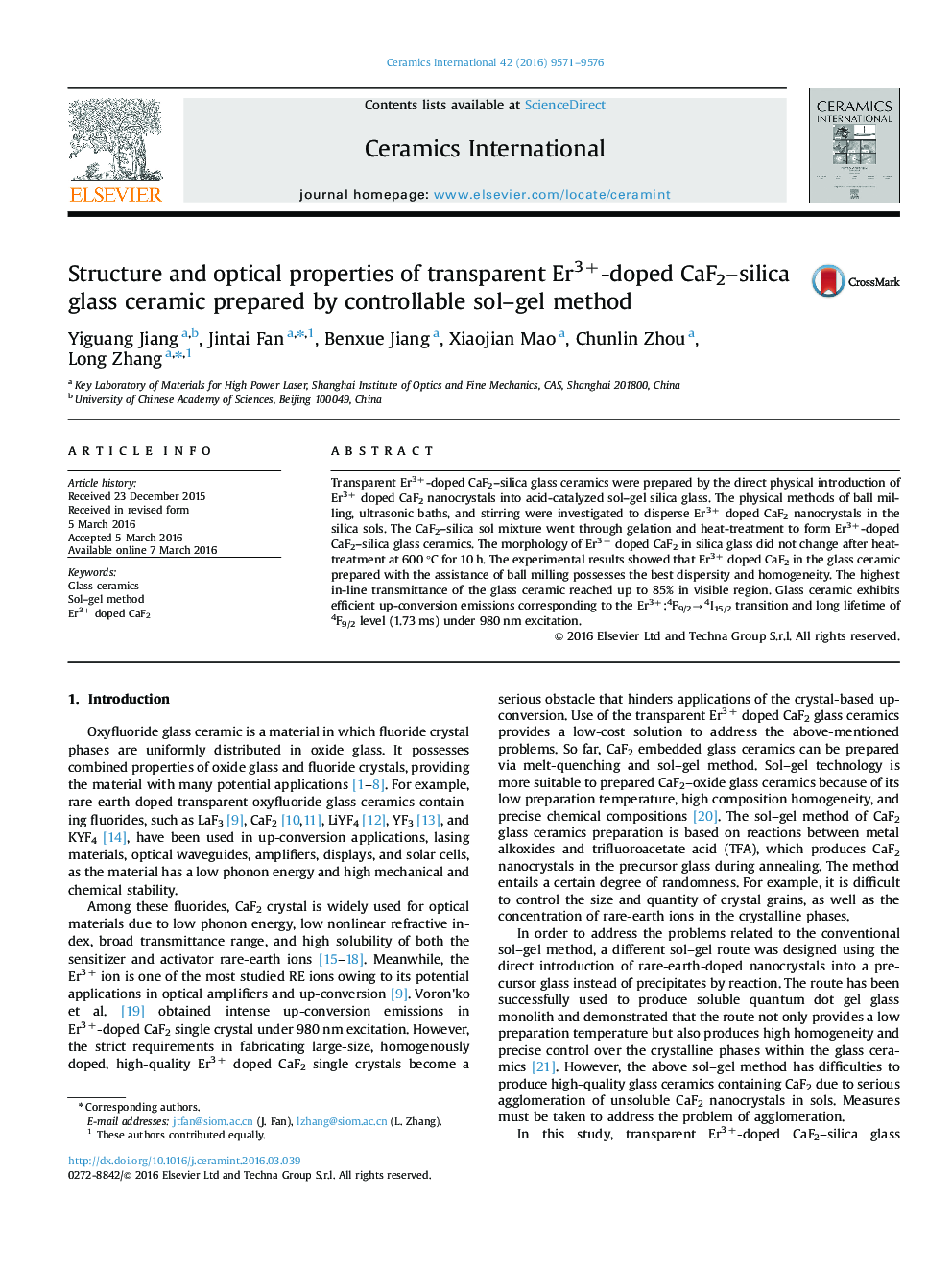| Article ID | Journal | Published Year | Pages | File Type |
|---|---|---|---|---|
| 1459027 | Ceramics International | 2016 | 6 Pages |
Transparent Er3+-doped CaF2–silica glass ceramics were prepared by the direct physical introduction of Er3+ doped CaF2 nanocrystals into acid-catalyzed sol–gel silica glass. The physical methods of ball milling, ultrasonic baths, and stirring were investigated to disperse Er3+ doped CaF2 nanocrystals in the silica sols. The CaF2–silica sol mixture went through gelation and heat-treatment to form Er3+-doped CaF2–silica glass ceramics. The morphology of Er3+ doped CaF2 in silica glass did not change after heat-treatment at 600 °C for 10 h. The experimental results showed that Er3+ doped CaF2 in the glass ceramic prepared with the assistance of ball milling possesses the best dispersity and homogeneity. The highest in-line transmittance of the glass ceramic reached up to 85% in visible region. Glass ceramic exhibits efficient up-conversion emissions corresponding to the Er3+:4F9/2→4I15/2 transition and long lifetime of 4F9/2 level (1.73 ms) under 980 nm excitation.
